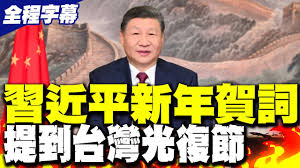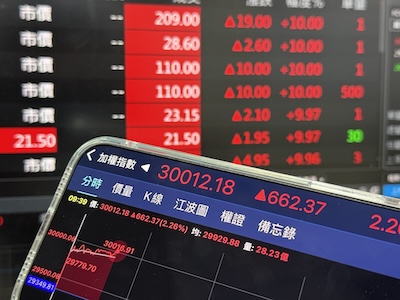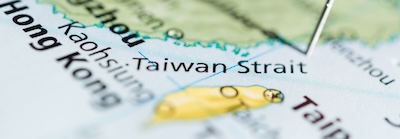Essentially, the new bipolar world has put Taiwan right in the crosshairs of the planet’s two biggest bullies, and only time will tell if it has the necessary diplomatic skill and wisdom to maintain its own peaceful existence.
Trade wars, firms getting blacklisted, oceanic border disputes, military parades, shifting alliances, sports controversies … this is the brave new global order we now live in – that of the bipolar world.

What exactly is a bipolar world? Well, ‘bi’ means ‘two’, and ‘polar’ roughly means ‘opposite’, so ‘bipolar’ signifies something like ‘two opposites’. In psychology, bipolar disorder denotes a state of mind that’s also called manic depression, where the person’s mood swings from one extreme to the other. In terms of geopolitics, on the other hand, a bipolar planet is one divided in half, between the top two superpowers, with all the other countries forced to pick a side.
Historically speaking, it seems that when one superpower arises to dominant its sphere of influence, another sometimes follows, challenging the first one for supremacy. This phenomenon originally occurred in Ancient Greece, when Athens came on the scene to take on all-powerful Sparta, a struggle that eventually led to the collapse of both city-states. This geopolitical happening even has its own term, Thucydides’s Trap, which is named after the Greek historian who pointed out that the ongoing battle between these two states, called the Peloponnesian War (431-404 B.C.E.), came about because of “the growth of Athenian power and the fear that this caused in Sparta”.
Fast-forward to the 21st century, where the dominant power is the good ‘ol US of A, who – fortunately for them – won the Cold War when the Soviet Union (the last great other superpower) collapsed in 1991. Since then, the US has enjoyed a more or less unfettered reign over the Earth, pursuing its interests and implementing its policies where it saw fit, in the general absence of any comparable rival to challenge its assertions. All of that changed, however, around 2010 when China started growing at a staggering economic pace, and now – as we can see from the events mentioned in the opening sentence of this article – shit’s getting heated between these two geopolitical giants.
Proof of how intense the struggle between the US and China has gotten in the last several years is the number of bipartisan bills the US Congress has floated on this topic. Legislative gridlock along political lines is usually the one thing you can count on in Washington, but it seems like that’s not the case for matters involving China. Recent examples of bills that would have been unthinkable a decade ago are the Defending America’s 5G Future Act (designed to keep Huawei out of the next-generation telecommunications infrastructure), the Hong Kong Human Rights and Democracy Act (requiring Hong Kong’s autonomy to be certified before the city qualifies for special treatment), and the Taiwan Allies International Protection and Enhancement Initiative Act (threatening to punish countries that break their diplomatic alliances with Taiwan).
One interesting aspect of the modern version of Thucydides’s Trap is that, while the originally cited conflict – that of Athens and Sparta – led directly to war, the struggle between the US and China seems to be playing out more in economic and ideological terms. As we can see from the Trump administration’s efforts to rectify trade imbalances with China, neutralize the power of its technology and protect American firms’ intellectual property, as well as the moral quandary many US companies face when doing business with China (ahem, the NBA), the economic conflict between the two powers is amping up like never before. But still, the struggle hasn’t degenerated into actual warfare, which is an outcome neither side probably wants (although cyberwarfare is certainly acceptable).
So, given that the two nations creating the bipolar state of the world are the US and China, and that neither of them likely wants to engage in an open war, where does that leave Taiwan? Not in a very good place, that’s for sure, albeit a unique one. Remarkably, Taiwan is caught smack in the center of the bipolarism we’ve described – precariously straddling the chasm between both sides, if you will – because, while China claims that the island is actually part of its nation (and, in fact, the vast majority of Taiwanese people are ethnically Chinese), the US is obviously its biggest ally. And – perhaps ironically – ideologically speaking, in terms of the liberal, democratic values of its political structure, Taiwan could be said to have more in common with America than it does with the mainland.
In practical terms, this means Taiwan has to somehow keep itself balanced between these two Goliaths, finding a way to work with and not be completely absorbed by the hostile one nearby, while currying enough favor with the one thousands of miles away to ensure its unyielding support and protection. But it’s difficult, of course, to be stuck in the middle of a bipolar universe, as that’s a space that – strictly speaking – doesn’t really exist (i.e., there can only be two sides), and if Taiwan ends up moving too far to either ‘pole’, there could be serious consequences. Essentially, the new bipolar world has put Taiwan right in the crosshairs of the planet’s two biggest bullies, and only time will tell if it has the necessary diplomatic skill and wisdom to maintain its own peaceful existence.
Author / Peter K. Thompson



